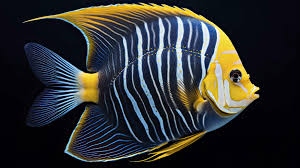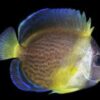Exploring the Transformation of Dragons in Contemporary Chinese Art

The dragon is one of the most iconic and enduring symbols in Chinese culture, known for its power, wisdom, and mystical qualities. Throughout centuries, the representation of the dragon has evolved, adapting to the changing social, cultural, and political landscapes of China. While dragons were once primarily associated with imperial power, mythology, and religion, contemporary Chinese artists have reinterpreted this symbol in innovative and diverse ways. Today, the dragon can be found in various forms in Chinese art, from traditional mediums like painting and sculpture to new media, such as digital art and installations. This article will explore the transformation of dragons in contemporary Chinese art, examining how the mythical creature has been reimagined in the context of modernity, globalization, and the shifting values of contemporary China.
1. The Dragon in Traditional Chinese Art
Before delving into the modern transformation of the dragon, it is essential to understand its role in traditional Chinese art. For centuries, the dragon symbolized imperial power and divine authority, associated with the emperor, who was believed to be the “Son of Heaven” and the earthly incarnation of the dragon. Dragons were depicted in royal portraits, architecture, textiles, and ceramics, often symbolizing the ruler’s connection to the heavens and his ability to maintain harmony between earth and sky.
1.1. Symbolism of the Dragon in Traditional Art
In traditional Chinese art, dragons were often portrayed as majestic and powerful creatures with long serpentine bodies, antlered heads, and sharp claws. These dragons were usually associated with natural elements like water, rain, and thunder, reflecting their role as rulers of the heavens and controllers of the forces of nature. The dragon’s depiction in art was also deeply connected to the concept of immortality, with many stories telling of dragons that could ascend to the heavens or transform into immortal beings.
Dragons in traditional Chinese art were often painted in bold colors, with intricate patterns that emphasized their spiritual and otherworldly qualities. The use of the dragon symbol in Chinese paintings, such as those by famous artists like Zhang Daqian and Qi Baishi, often conveyed messages of power, protection, and good fortune, aligning with the dragon’s role as a guardian and bringer of blessings.
2. The Rise of Contemporary Chinese Art
The late 20th century saw a significant shift in Chinese art, as the country underwent profound social, political, and economic changes. With the opening up of China to global markets and the emergence of a more cosmopolitan society, Chinese artists began to challenge traditional artistic norms and embrace a variety of new styles, mediums, and techniques. Contemporary Chinese art became a platform for self-expression, social critique, and engagement with both Chinese heritage and global issues.
2.1. The Dragon as a Symbol of Cultural Heritage
As contemporary artists in China began to explore their cultural heritage in new and innovative ways, the dragon became an important symbol for reflecting on China’s history and identity. Many artists used the dragon to address issues of national pride, cultural continuity, and the tension between tradition and modernity. Rather than depicting dragons in the traditional manner, contemporary Chinese artists began to reinterpret the symbol in ways that resonated with the changing values and experiences of modern Chinese society.
One example is the work of Ai Weiwei, a globally renowned Chinese contemporary artist known for his provocative installations and sculptures. In his piece “Dragon,” Ai Weiwei reimagined the dragon as a modern icon, made from traditional Chinese materials but with a contemporary twist. By incorporating the dragon symbol into his work, Ai Weiwei highlighted the intersection of traditional Chinese culture and global contemporary art, reflecting on China’s complex relationship with its past and future.
3. The Dragon in New Media and Digital Art
In the 21st century, the emergence of new media and digital technologies has transformed the way artists approach traditional symbols and concepts. Contemporary Chinese artists have embraced digital art, animation, and interactive installations, using technology to reimagine the dragon in dynamic and engaging ways. The use of digital mediums allows artists to explore the dragon’s transformation in more abstract, fluid, and visually striking ways, moving beyond the static depictions of the past.
3.1. Digital Dragons: Virtual Reinterpretations
One of the most notable trends in contemporary Chinese art is the rise of virtual dragons in the realm of digital art. Digital artists in China have begun to experiment with animation, virtual reality (VR), and augmented reality (AR) to bring the dragon symbol to life in innovative ways. These virtual dragons often retain their traditional associations with power and mystery but are presented in futuristic, interactive formats that engage the audience in new and exciting ways.
For instance, Zhang Huan, a prominent Chinese artist known for his multimedia works, has explored the concept of dragons in digital art by creating animated dragons that appear in virtual spaces. These digital dragons challenge the viewer’s perception of traditional Chinese iconography by merging ancient symbols with cutting-edge technology. By creating dragons that exist only in virtual reality, Zhang Huan highlights the fluidity and adaptability of cultural symbols in the digital age.
4. The Dragon in Contemporary Sculpture
Sculpture has long been an important medium for representing dragons in Chinese art, but contemporary Chinese sculptors have pushed the boundaries of traditional dragon depictions by using new materials and larger-than-life scale. Modern Chinese sculptures often reflect the changing attitudes toward the dragon, offering a more abstract or conceptual approach to its representation.
4.1. Giant Dragons in Public Art Installations
In recent years, public art installations have become a popular venue for the expression of cultural symbols in Chinese cities. Several artists have used the dragon as a central theme in large-scale public art pieces, blending traditional symbolism with modern artistic practices. One notable example is Xu Bing’s installation “Dragonfly Eyes,” which features a dragon made of recycled materials, representing the connection between ancient traditions and contemporary environmental concerns. This giant sculpture serves as a powerful commentary on China’s rapid modernization and its complex relationship with nature and tradition.
These large-scale dragon sculptures often incorporate elements of contemporary society, such as urbanization, industrialization, and globalization, into the traditional dragon form. By doing so, they explore the tension between maintaining cultural heritage and adapting to the demands of modern life.
5. The Dragon as a Metaphor for Transformation and Change
In contemporary Chinese art, the dragon has increasingly been used as a metaphor for transformation and change. As China navigates its transition from a traditional society to a global economic power, the dragon has come to symbolize the country’s journey through modernity, growth, and reinvention.
5.1. The Dragon and China’s Rapid Transformation
Many contemporary Chinese artists use the dragon to comment on China’s rapid economic growth and the dramatic shifts in its social and political landscape. The dragon, which has traditionally represented stability and imperial power, is now being reinterpreted to reflect the dynamism and volatility of modern China. By using the dragon as a metaphor for transformation, artists can express both the optimism and challenges associated with the country’s modernization.
For instance, Cai Guo-Qiang, a leading Chinese artist known for his gunpowder art and explosive installations, has used the image of the dragon to explore themes of destruction and rebirth. His explosive works often involve dragons or dragon motifs, symbolizing the cyclical nature of creation and destruction. Through these dramatic, visually impactful pieces, Cai Guo-Qiang emphasizes the transformative power of the dragon as it moves through cycles of life, death, and renewal.
6. The Dragon in Popular Culture and Consumerism
In addition to its role in fine art, the dragon has also found its way into Chinese popular culture and consumerism. The dragon’s image is used in everything from advertising to fashion, toys, and merchandise, reflecting the continued importance of this symbol in modern Chinese society. However, this commercialization of the dragon also raises questions about the authenticity and commodification of cultural symbols.
6.1. The Dragon in Branding and Pop Culture
The dragon’s continued presence in branding, advertising, and consumer goods highlights its adaptability and widespread appeal. It is often used in logos, product designs, and advertisements to evoke feelings of power, good fortune, and vitality. The use of the dragon in pop culture and commercial products often takes on a more playful, stylized form, reflecting the shift from the dragon’s traditional association with imperial authority to a more accessible and marketable image.
In contemporary fashion, the dragon is frequently used in clothing and accessories to evoke a sense of luxury, power, and mysticism. The fusion of traditional symbols with modern design has created a new, globalized version of the dragon that resonates with both Chinese and international audiences.
7. Conclusion: The Evolution of the Dragon in Contemporary Chinese Art
The transformation of the dragon in contemporary Chinese art reflects the dynamic nature of Chinese culture itself—ever-evolving, adaptive, and responsive to both internal and external influences. While the dragon remains a symbol of power, wisdom, and immortality, contemporary Chinese artists have reinterpreted it in new and innovative ways, using it as a metaphor for change, transformation, and modernization. Whether through digital media, large-scale sculptures, or consumer products, the dragon continues to be a potent symbol in Chinese society, representing the continuity of tradition alongside the forces of modernity. Through these artistic transformations, the dragon not only preserves its deep cultural significance but also finds new ways to resonate with the globalized world.

